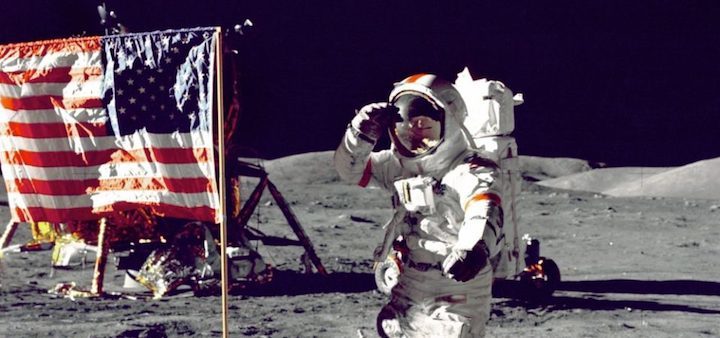14.07.2018

Washington, DC—The Trump administration’s push “to boldly go where no man has gone before” has revamped the United States’ space industry. This renewed fervor simulating the likes of the U.S.-Russia Space Race has inspired cooperation between national space agencies and between government organizations and commercial enterprises. John Bridenstine, the director of the National Aeronautics and Space Administration (NASA) confirmed this collaborative approach to modern space exploration while at a recent POLITICO event. Recognizing the role of a robust commercial marketplace in the new space age, Bridenstine predicted that the combined efforts of NASA, commercial companies, and various national space agencies will launch mankind beyond its current limitations.
NASA-Commercial Companies Relationship
The added involvement of private companies has transitioned the space industry away from a bilateral relationship between NASA and contractors into a blooming multilateral cooperation. Bridenstine praised this collaboration and recognized the different roles that commercial enterprises and NASA play in advancing the space agenda. He described NASA as a trailblazer because of the organization’s ability to push past barriers of excessive risk and inadequate returns to investment that obstruct private companies from space innovation. Commercial enterprises can capitalize on second-mover advantages to increase competition and push down costs of space travel as NASA absorbs these pioneering costs.
An example is the private sector’s role in soft landing on the moon—such as the Commercial Lunar Payload Servicing (CLPS). Under the Lunar Payload Service Contract, private vendors compete to carry NASA payloads to the Moon’s surface. Ten companies have already expressed interest in the project and have proven their competency. Bridenstine outlined the Commercial Crew Program in which NASA partners with private space companies to train and launch astronauts into space. The director said the world can expect “American astronauts in American rockets from American soil” to be back in space very soon because of this partnership.
Sustainability in Space
Bridenstine highlighted President Trump’s Space Policy Directive 1 and its mission to make modern space travel more sustainable. NASA projects such as the Space Launch System and Lunar Orbital Platform-Gateway are sustainable models that ensure space exploration continues into the future even with the threat of risk and costs.
“We want to make sure that whatever architecture we develop for human exploration, that it is not something where we’re going to get to the surface of the moon and then decide that it’s too expensive or too risky and therefore we’re not going to go back,” Bridenstine explained.
Although he prioritizes sustainability, Bridenstine’s discussion excluded fiscal specifics on how NASA will accomplish that goal. Instead, he highlighted the role of reusable rockets and commercial companies. While the idea dates back to the 1960’s, technology behind building reusable rockets has been out of reach. However, according to the NASA director, the advent of recent technology and privatization in the space industry has made that dream attainable. He also noted that commercial companies will contribute to space travel’s sustainability since they contribute more players and ideas; NASA no longer single handedly monopolizes human exploration into space. But while reusable rockets and commercial involvement contribute to space travel’s sustainability, specifics related to fund allocations would have supplanted Bridenstine’s argument—his forecast that Congress will authorize additional NASA funding even though projects are over budget and behind schedule detracts from his sustainability discussion.
International Cooperation
Bridenstine recognized the role that international cooperation plays in the new space age, specifying NASA’s collaboration with the European Space Agency (ESA) and Japan Aerospace Exploration Agency (JAXA). Excitement surrounding human exploration, returning to the moon, and going to Mars has garnered more cooperation from space agencies located worldwide, affirming that at times the world “needs some outside, universal threat [or goal] to make us recognize [humanity’s] common bond.”
Concerted and collaborative efforts such as building the James Webb Space Telescope, Bridenstine noted, prove that even during times of strained international relations, working towards a universal goal can alleviate tensions.
“Space cooperation, I believe, is really one of the best soft power tools of the United States of America,” said Bridenstine. “It is one of the best capabilities that we have, when all other types of communication break down because of world events, we can still have a channel of communication.”
Space is the final frontier in international diplomacy. When economic, political, military, or even cultural methods fail to build international cooperation and unify a divided world, space cooperation endures. The work of international space collaboration and NASA-commercial enterprise partnerships not only unites the world to better understand the cosmos but pushes countries to overcome terrestrial strife.
Quelle: Diplomatic Courier
